
How to Use SparkFun Qwiic Joystick: Examples, Pinouts, and Specs
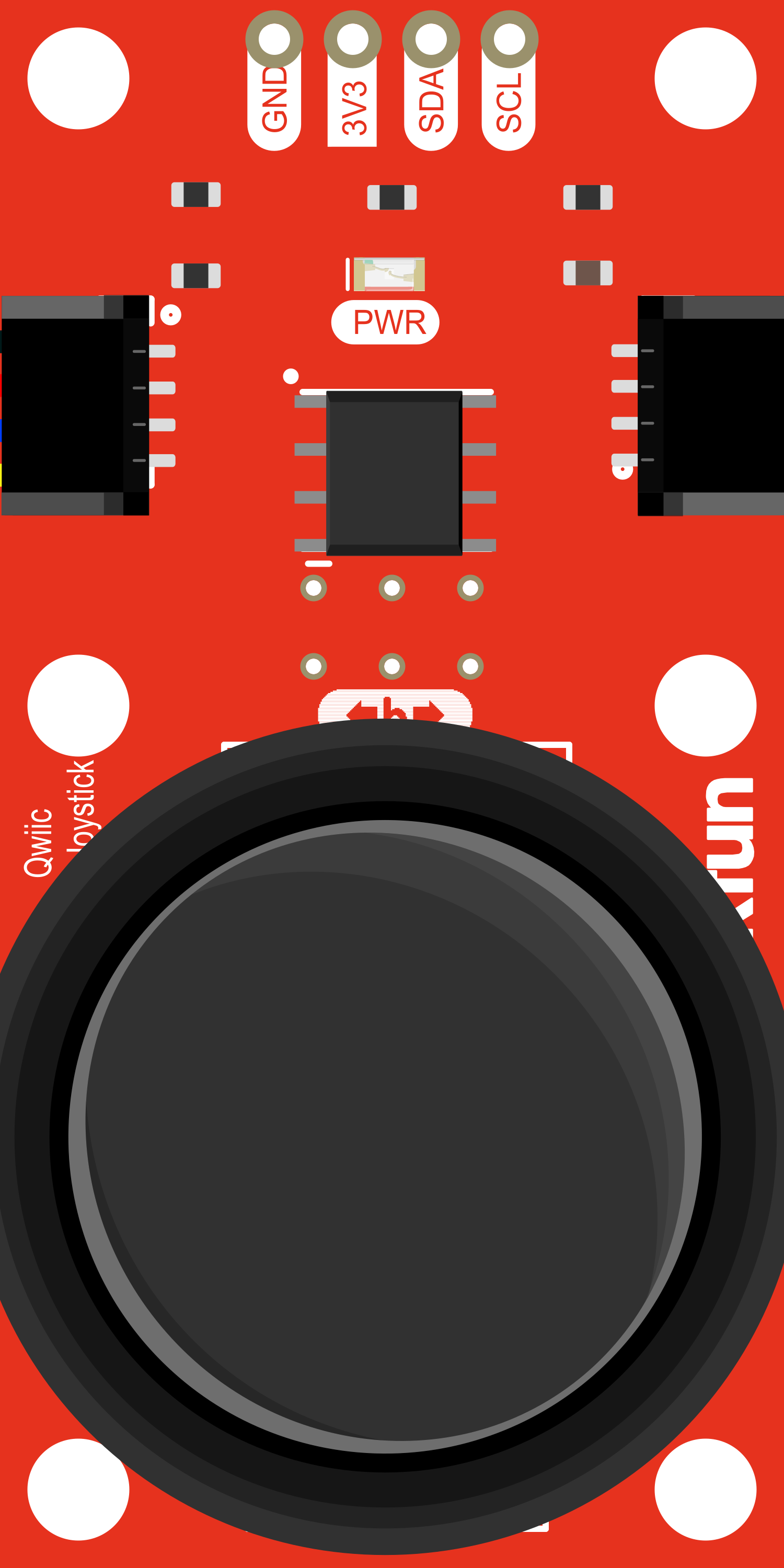
 Design with SparkFun Qwiic Joystick in Cirkit Designer
Design with SparkFun Qwiic Joystick in Cirkit DesignerIntroduction
The SparkFun Qwiic Joystick is a compact breakout board that provides an intuitive interface for user input. It combines an analog joystick with two buttons, offering a simple yet effective control mechanism for a wide range of applications, from gaming controllers to robotic control systems. The integration of Qwiic connectors simplifies the process of connecting the joystick to other devices, enabling a quick and secure setup without the need for soldering.
Explore Projects Built with SparkFun Qwiic Joystick
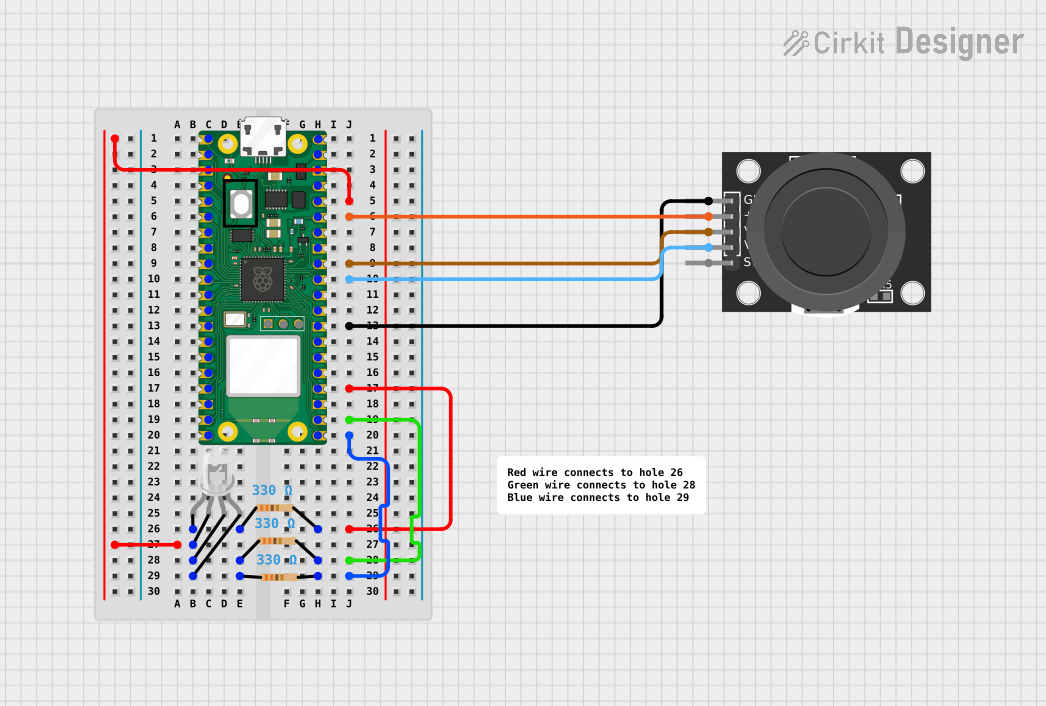
 Open Project in Cirkit Designer
Open Project in Cirkit Designer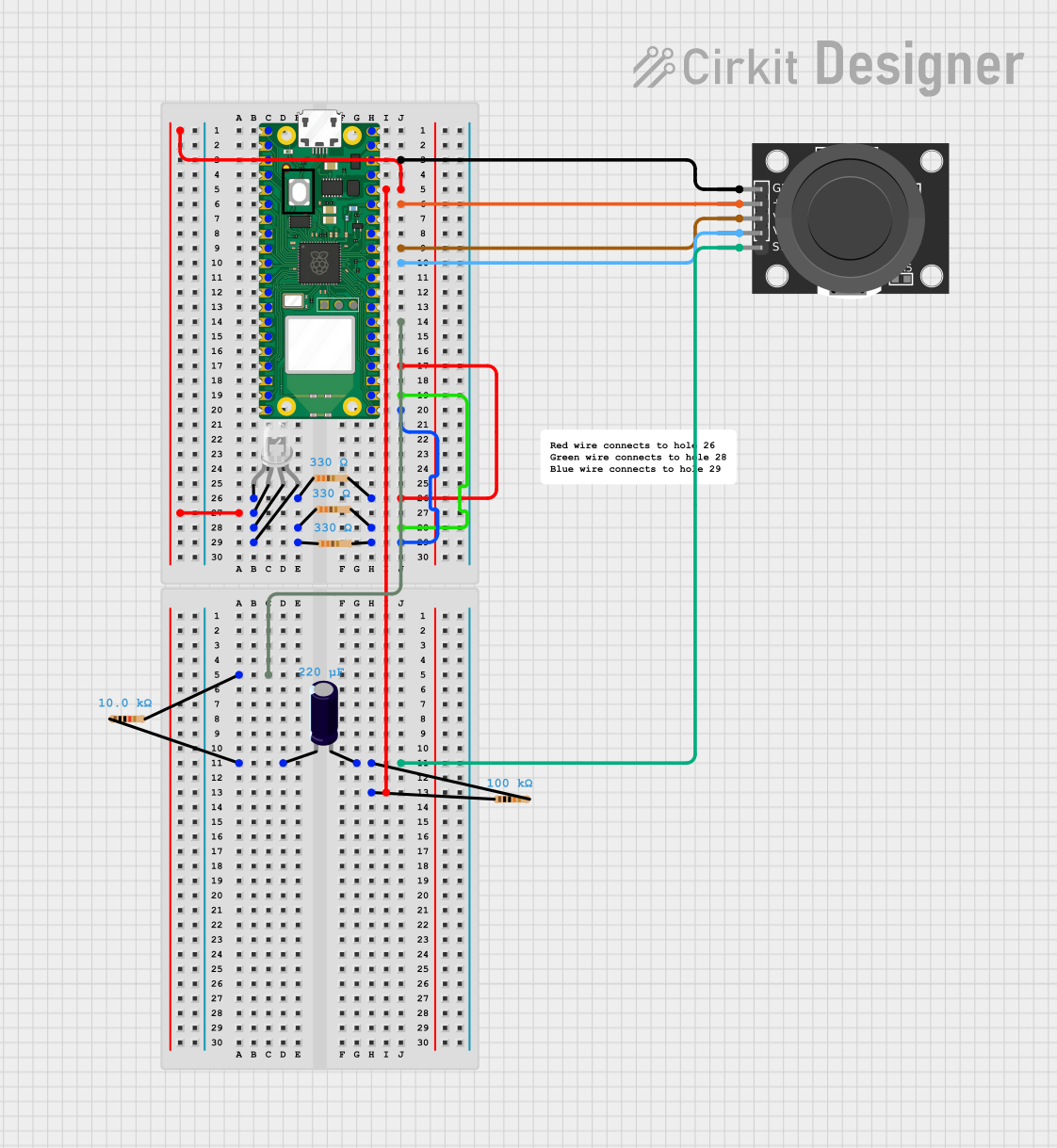
 Open Project in Cirkit Designer
Open Project in Cirkit Designer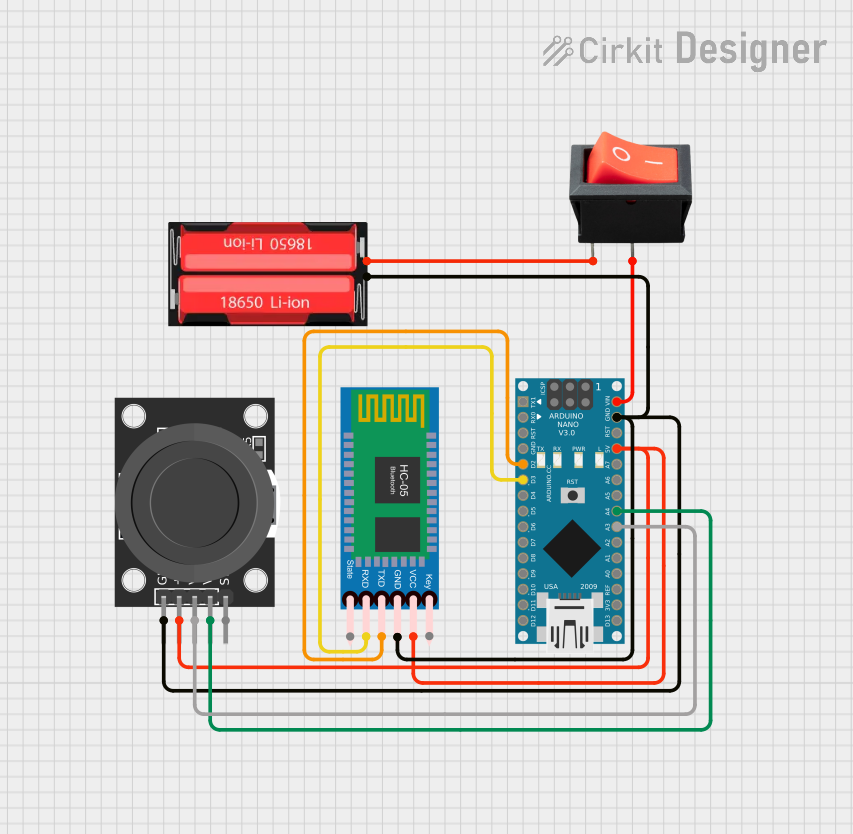
 Open Project in Cirkit Designer
Open Project in Cirkit Designer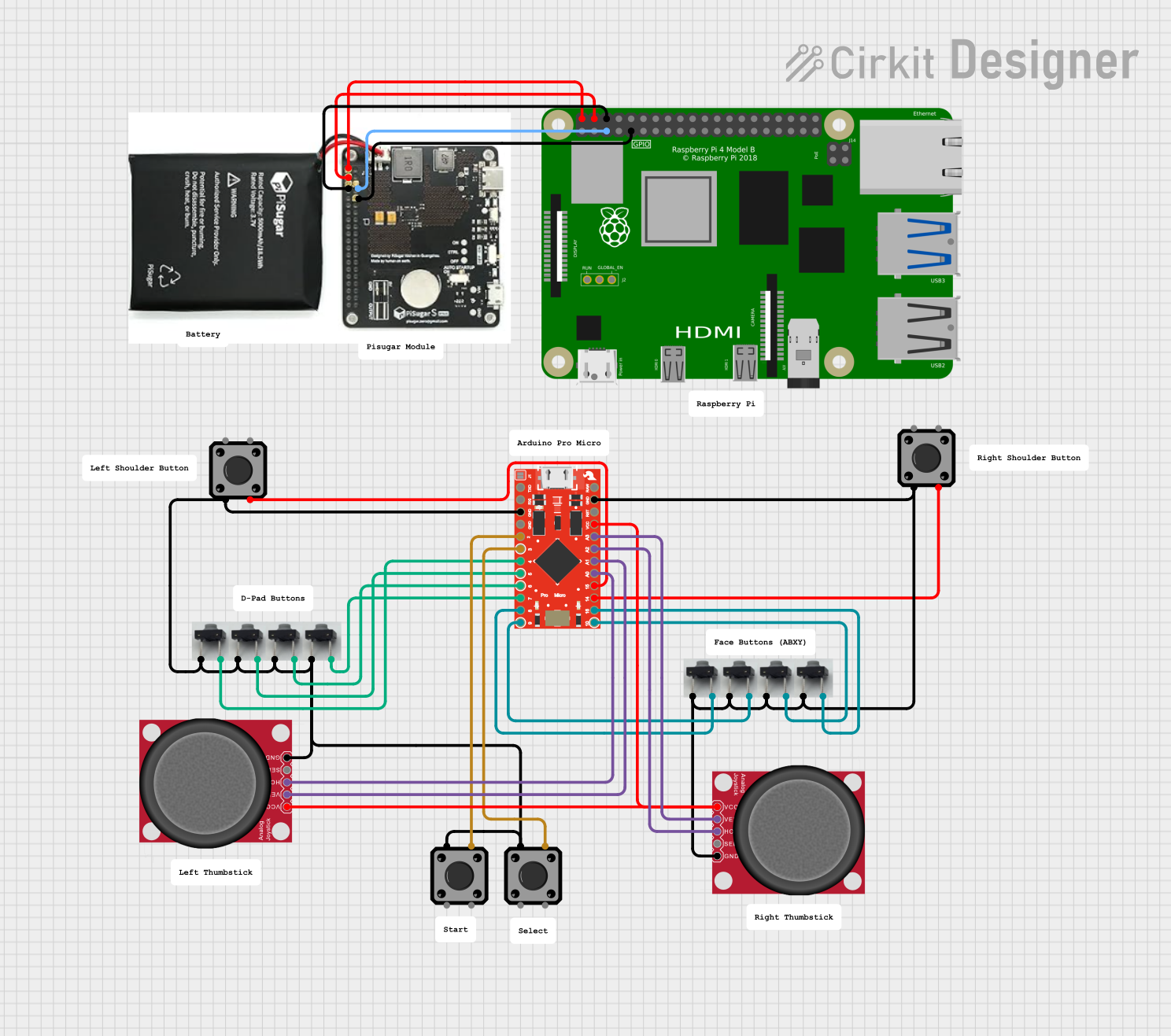
 Open Project in Cirkit Designer
Open Project in Cirkit DesignerExplore Projects Built with SparkFun Qwiic Joystick

 Open Project in Cirkit Designer
Open Project in Cirkit Designer
 Open Project in Cirkit Designer
Open Project in Cirkit Designer
 Open Project in Cirkit Designer
Open Project in Cirkit Designer
 Open Project in Cirkit Designer
Open Project in Cirkit DesignerCommon Applications
- Gaming controllers
- Robotics control interfaces
- Menu navigation for small displays
- DIY remote controls for various projects
Technical Specifications
Key Technical Details
- Voltage: 3.3V (via Qwiic connect system)
- Current: 10 mA (typical use)
- Dimensions: 26.4mm x 26.4mm x 32mm
Pin Configuration and Descriptions
| Pin Name | Description |
|---|---|
| GND | Ground connection |
| 3.3V | Power supply input (3.3V from Qwiic system) |
| SDA | I2C data line |
| SCL | I2C clock line |
| INT | Interrupt pin (active low) |
Usage Instructions
Integration into a Circuit
- Powering the Device: Connect the Qwiic Joystick to a 3.3V power source through the Qwiic connect system.
- I2C Communication: Utilize the SDA and SCL lines for I2C communication with your microcontroller.
- Mounting: Secure the joystick in your design, ensuring that it is accessible and can move freely.
Important Considerations and Best Practices
- Voltage Levels: Ensure that the power supply is 3.3V, as higher voltages may damage the board.
- I2C Addressing: The default I2C address for the Qwiic Joystick is 0x20. Make sure that no other device on the I2C bus has the same address.
- Calibration: Calibrate the joystick's center position in your software to account for any mechanical tolerances.
- Debouncing: Implement software debouncing for the buttons to prevent false triggering due to mechanical contact bounce.
Example Code for Arduino UNO
#include <Wire.h> // Include the I2C library (required for Qwiic)
// Define the I2C address for the Qwiic Joystick
#define JOYSTICK_ADDR 0x20
void setup() {
Wire.begin(); // Join the I2C bus as a master
Serial.begin(9600); // Start the serial communication
}
void loop() {
Wire.beginTransmission(JOYSTICK_ADDR); // Start I2C transmission
Wire.write(0x03); // Point to the specified register
Wire.endTransmission(false); // End transmission, but keep the connection active
Wire.requestFrom(JOYSTICK_ADDR, 5); // Request 5 bytes from the joystick
while (Wire.available()) { // While bytes are available to read
int joystickX = Wire.read(); // Read the X-axis value
int joystickY = Wire.read(); // Read the Y-axis value
int button1 = Wire.read(); // Read the button 1 value
int button2 = Wire.read(); // Read the button 2 value
// Print the values to the serial monitor
Serial.print("X: ");
Serial.print(joystickX);
Serial.print(" Y: ");
Serial.print(joystickY);
Serial.print(" Button1: ");
Serial.print(button1);
Serial.print(" Button2: ");
Serial.println(button2);
}
delay(500); // Wait for 500ms before the next loop iteration
}
Troubleshooting and FAQs
Common Issues
- Joystick Not Responding: Ensure that the Qwiic connections are secure and the power supply is at 3.3V.
- Inaccurate Readings: Calibrate the joystick's center position in your software.
- I2C Communication Errors: Check for conflicting I2C addresses and ensure proper pull-up resistors are in place.
Solutions and Tips for Troubleshooting
- Secure Connections: Double-check all Qwiic connectors and wiring to ensure a solid connection.
- Software Calibration: Implement a calibration routine in your setup code to account for any offset in the joystick's neutral position.
- I2C Scanning: Use an I2C scanning script to detect all devices on the bus and resolve any address conflicts.
FAQs
Q: Can I use the Qwiic Joystick with a 5V system? A: While the Qwiic system is designed for 3.3V, level shifting can be used to interface with 5V systems. However, direct connection without level shifting will damage the board.
Q: How do I change the I2C address of the joystick? A: The I2C address is fixed and cannot be changed for this device.
Q: Is it possible to use multiple Qwiic Joysticks on the same I2C bus? A: Since the I2C address is fixed, you cannot use multiple Qwiic Joysticks on the same bus without additional hardware, such as an I2C multiplexer.